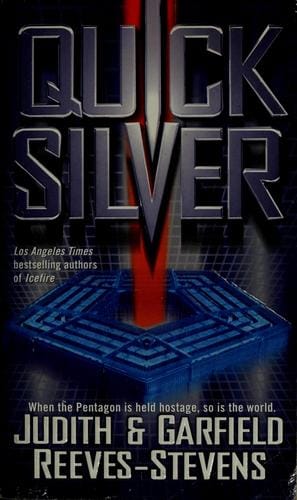Quicksilver: From Elemental Enigma to Pop-Culture Icon
Explore Quicksilver’s chemistry, history, uses, risks and pop-culture impact in this comprehensive 800-word guide to the liquid metal better known as mercury.

Introduction
Quicksilver, better known to chemists as elemental mercury and to comic-book fans as a silver-haired speedster, is one of those rare words that instantly triggers curiosity. The term conjures images of shimmering liquid metal slipping through a thermometer as easily as it races across a laboratory bench, yet it also evokes the super-human blur of Marvel’s Quicksilver dashing through danger. In this article we dive into the origin, properties, uses, hazards and cultural footprint of Quicksilver, revealing why the name has endured from ancient alchemists to modern movie screens.
What Is Quicksilver?
Quicksilver is the historic name for the chemical element mercury, symbol Hg and atomic number 80. The word combines “quick,” an old term for “living,” with “silver,” describing its color and fluid appearance. Unlike most metals, mercury remains liquid at room temperature, forming silvery beads that readily coalesce. The Latin name hydrargyrum means “watery silver,” which is why its symbol, Hg, seems unrelated to the English word. Over centuries, alchemists prized Quicksilver for its mobility, mystique and role in attempts to transmute base metals into gold.
Physical and Chemical Properties
Mercury’s most famous property is its melting point of –38.83 °C (–37.89 °F), allowing it to flow freely under normal conditions. It has high density—about 13.5 g/cm³—so a small volume weighs considerably more than most common materials. Electrically, mercury is a decent conductor, and thermally it expands predictably with temperature, making it ideal for traditional thermometers and barometers. Chemically, it forms amalgams with gold, silver and many other metals, while its vapor readily combines with oxygen to produce toxic mercuric oxide. These unusual traits make Quicksilver valuable yet potentially dangerous.
Historical Significance
The first documented use of Quicksilver dates back to ancient China and India around 1500 BCE. Egyptian tombs contain mercury-filled vessels, suggesting ritual or medicinal importance. During the Middle Ages, alchemists believed mercury was one of the three prime substances, alongside salt and sulfur, that composed all matter. The famous scientific revolution figure Sir Isaac Newton engaged in mercury experiments that likely contributed to his declining health. In the 16th century the amalgamation process, which uses mercury to extract gold and silver from ore, fueled colonial mining booms in the Americas, shaping global economies—and tragic environmental legacies.
Modern Industrial Uses
While many applications have been phased out, Quicksilver still plays niche but critical roles today. Fluorescent and high-intensity discharge lamps rely on small amounts of mercury vapor to generate ultraviolet light. In the chlorine-alkali industry, mercury-cell technology remains in limited use for producing chlorine gas and caustic soda, though membrane cells are replacing it. Button batteries, tilt switches, and some scientific instruments also depend on mercury’s unique attributes. Additionally, dental amalgam—an alloy typically containing about 50 % mercury—has repaired teeth for 150 years, although composite resins are gaining popularity.
Health and Environmental Concerns
Despite its utility, Quicksilver poses serious health risks. Elemental mercury can vaporize at room temperature; inhalation of its colorless, odorless gas can damage the nervous, digestive and immune systems. Organic compounds such as methylmercury bioaccumulate in fish and can impair fetal brain development. Notorious disasters like the Minamata disease outbreak in Japan (1950s) and the mercury poisoning of Iraqi grain (1971) spurred tighter regulations. Modern policies, including the Minamata Convention on Mercury (2013), aim to reduce emissions, phase-out certain products and ensure safe storage and disposal worldwide.
Quicksilver in Pop Culture
The allure of Quicksilver extends beyond the laboratory into fiction, fashion and sport. Marvel Comics introduced Pietro Maximoff, aka Quicksilver, in 1964 as a mutant gifted with super-speed; his cinematic appearances in the X-Men and Avengers franchises revitalized the name for new generations. Surfer apparel giant Quiksilver—spelled without the “c”—borrowed the term to evoke agility and the reflective shimmer of ocean waves. Even science-fiction writers use “quicksilver” metaphorically to depict shape-shifting alien metals or mind-bending computer code, confirming the word’s enduring symbolic power.
Safe Handling and Disposal
If you encounter liquid mercury, treat it with respect. Always wear gloves, avoid touching the metal directly, and work in a well-ventilated area. Spills must be collected using specialized suction devices or sulfur-impregnated powders that bind the droplets; never sweep or vacuum, which disperses toxic vapor. Place recovered mercury in airtight, labeled containers and deliver it to hazardous-waste facilities. When replacing mercury thermometers, fluorescent bulbs or dental fillings, choose certified recycling programs that prevent release into the environment.
Conclusion
Whether shimmering in a Renaissance alchemist’s flask or streaking across a movie screen, Quicksilver captures the imagination like few other words. This liquid metal’s remarkable properties have advanced science, technology and art, yet its toxicity reminds us that progress demands responsibility. By appreciating both the fascinating history and the modern challenges of mercury, we can preserve its legacy while safeguarding human health and the planet for future generations.



